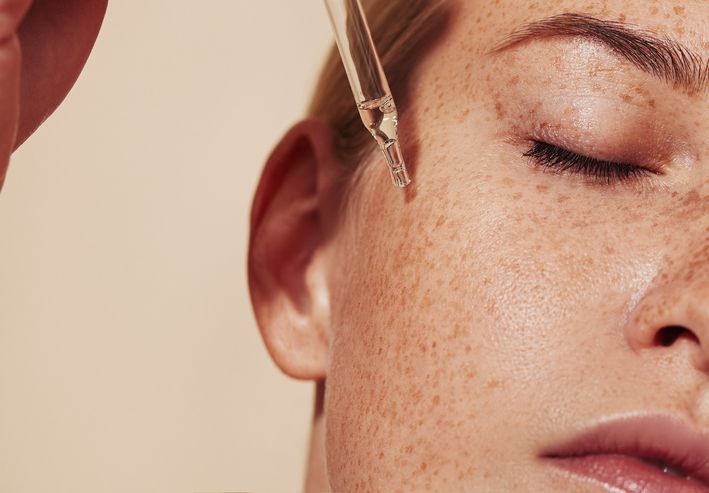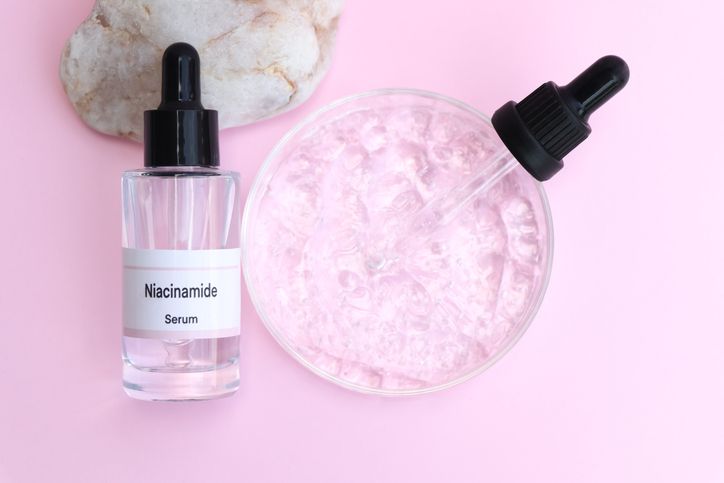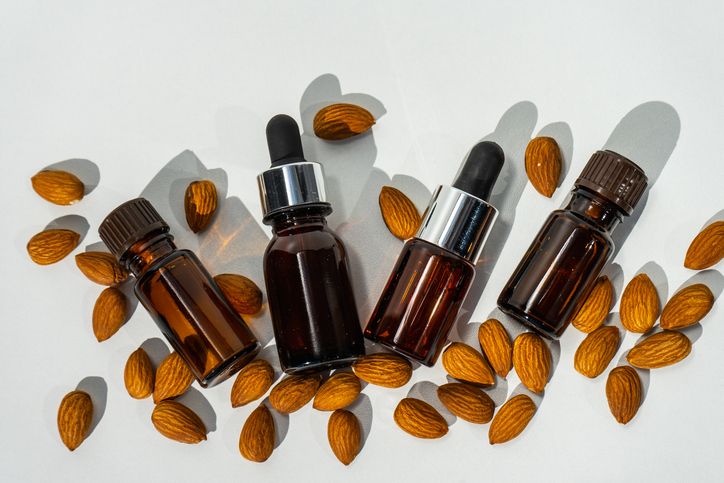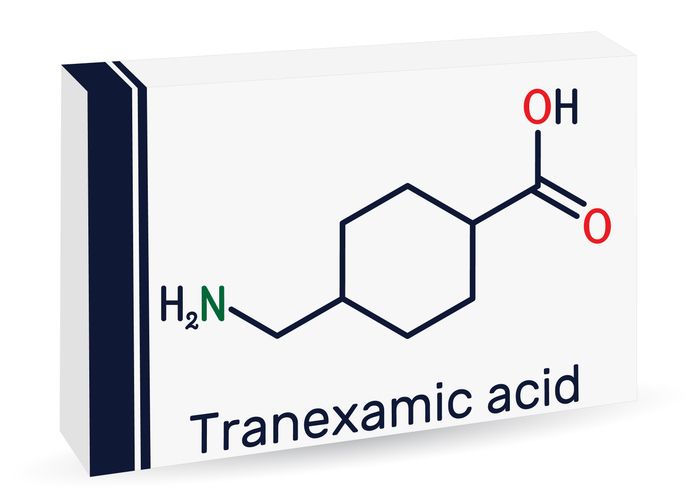- Home
- Trend
- Weight Loss Strategies
- Acne Tips
- Hair Health Information
- Blemish Removal Tips
- Acne Scar Removal Tips
- Muscle Building Techniques
- Intimate Care Tips
- Postpartum Intimate Care
- Eye Bags Wiki
- Tips for Face Slimming
- Secret of Permanent Hair Removal
- Breast Enlargement Tips
- Cure to Snoring
- Marionette Lines
- Skin-Tightening Secrets
Skin pigmentation is a common skin condition that causes dark patches or spots on the skin due to excess melanin production. While it can affect people of all skin tones, certain people are more prone to developing pigmentation disorders than others.
What Is Hyperpigmentation on the Face? A Look into Uneven Skin Tone

Hyperpigmentation occurs when the body produces too much melanin, the pigment responsible for skin color. While melanin plays a protective role by shielding the skin from sun exposure, excessive production leads to dark patches and uneven skin tone. This condition is classified under pigmentation disorders, affecting various skin types and tones.
The skin’s pigment cells (melanocytes) react to external and internal triggers, causing irregular melanin production. This results in sun pigmentation, age spots, melasma, and post-inflammatory hyperpigmentation (PIH)—each with distinct appearances and causes.
Types of Pigmentation: Are Your Dark Spots Temporary or Permanent?

Not all hyperpigmentation is the same. Understanding the different types of pigmentation can help in choosing the best treatment for hyperpigmentation and preventing further discoloration.
Sun Pigmentation & Age Spots
Sun pigmentation, also known as sun spots or age spots, develops in sun-exposed areas such as the face, neck, hands, and arms. These small, dark patches are caused by prolonged UV exposure, which accelerates melanin production in an attempt to protect the skin.
Over time, the pigment accumulates, leading to visible brown or black spots that typically worsen with age and continued sun exposure. While they are harmless, they can become more prominent over time.
Melasma (Hormonal Pigmentation)
Melasma appears as symmetrical, brown or gray patches on the forehead, cheeks, nose, and upper lip. Unlike sun spots, melasma is primarily triggered by hormonal factors, including pregnancy, birth control pills, and hormone therapy.
It is more common in women and people with darker skin tones, as their melanin-producing cells are more reactive to hormonal fluctuations. Melasma can be persistent and difficult to treat.
Post-Inflammatory Hyperpigmentation (PIH)
Post-inflammatory hyperpigmentation (PIH) occurs after the skin experiences trauma or inflammation, leading to dark spots in the affected area. Common causes include acne, burns, eczema, allergic reactions, or even harsh skincare treatments.
Darker skin tones are more prone to PIH, as they naturally produce more melanin in response to injury or irritation. Although PIH can fade over time, it often takes months or even years without proper hyperpigmentation treatment for face and body.
Pigmentation from Skin Disorders
Certain skin disorders and medical conditions can cause patches of skin to darken unevenly, leading to hyperpigmentation skin concerns beyond typical sun damage or hormonal changes.
Conditions such as pityriasis alba (a mild form of eczema), Addison’s disease (a hormonal disorder affecting melanin production), and other skin diseases can disrupt the skin’s natural pigment balance, resulting in blotchy or uneven skin tone. In some cases, these pigmentation issues do not respond to regular treatments, requiring a specialized approach from a dermatologist.
Conditions That May Be Mistaken for Hyperpigmentation
While hyperpigmentation is a skin pigmentation disorder, other skin conditions may resemble it, leading to misdiagnosis or confusion. These include:
Skin Cancer (Melanoma) – Some dark spots that change shape, size, or bleed may not be hyperpigmentation but a sign of melanoma, a dangerous form of skin cancer. Any irregular pigmentation with raised edges, rapid growth, or itching should be examined by a dermatologist.
Post-Inflammatory Erythema (PIE) – Unlike hyperpigmentation, PIE appears as red, pink, or purplish marks, commonly following acne breakouts or skin irritation. These are caused by damaged blood vessels rather than excess melanin.
Vitiligo – The opposite of hyperpigmentation, vitiligo results in loss of pigment, leading to white patches on the skin.
Pityriasis Alba – A mild pigmentary abnormality causing light, scaly patches, often mistaken for hypopigmentation rather than hyperpigmentation.
Contact Dermatitis and Skin Rashes – Some rashes or skin conditions triggered by certain medications, allergic reactions, or infections may cause temporary discoloration that resembles hyperpigmentation but fades with treatment.
免費體驗
PicoCure Pigmentation Removal Treatment
1 Minute Self-Registration
Date should not be before minimal date
Who Is More Prone to Hyperpigmentation?
While hyperpigmentation can affect anyone, certain groups are at a higher risk due to genetics, lifestyle habits, hormonal changes, and skin type. Factors that increase the likelihood of developing pigment skin issues include:
1. People with Darker Skin Tones
Darker skin tones naturally produce more melanin, making them more susceptible to excess melanin accumulation. Individuals with Fitzpatrick skin types III-VI (medium to deep brown skin) are at a higher risk of developing hyperpigmentation from sun exposure, inflammation, or injuries. However, they are also less prone to sunburn due to the protective nature of their melanin.
2. Individuals Frequently Exposed to the Sun
Sun exposure is one of the leading causes of pigmentation disorders. People who spend extended periods in sun-exposed areas without proper protection (SPF 50+ sunscreen, hats, and protective clothing) are more likely to develop sun pigmentation, age spots, and freckles.
3. Pregnant Women & Those on Birth Control Pills
Hormonal fluctuations significantly impact melanin production. Women experiencing pregnancy, menopause, or taking oral contraceptives may develop melasma, which appears as large brown patches on the cheeks, forehead, and upper lip.
4. People with a History of Acne or Skin Trauma
Post-inflammatory hyperpigmentation (PIH) occurs when skin trauma, such as acne, burns, or cuts, triggers excess melanin production. Individuals prone to severe acne, eczema, or frequent skin rashes are more likely to develop persistent dark patches after the skin heals.
5. Those Using Certain Medications or Skin Treatments
Some medications and skin care products can lead to hyperpigmentation on the face as a side effect. These include:
Topical corticosteroids – Long-term use may cause skin discoloration.
Chemotherapy and antibiotics – Certain medications can cause drug-induced hyperpigmentation.
Harsh exfoliating treatments – Overuse of chemical peels, microdermabrasion, or laser therapy can irritate the skin and trigger hyperpigmentation instead of fading it.
6. People with Certain Medical Conditions
Some health conditions and genetic disorders contribute to pigmentary abnormalities, making individuals more prone to uneven skin tone. These include:
Addison’s disease – A disorder affecting the adrenal glands, leading to dark patches on the face, hands, and skin folds.
Liver disease – Can cause abnormal skin pigmentation due to toxin buildup.
Hemochromatosis – A condition where excess iron deposits in the skin, leading to bronze or gray pigmentation.
Knowing who is at risk can help in preventing hyperpigmentation and finding the best treatment for hyperpigmentation before it worsens.
Best Treatment for Hyperpigmentation: What Works & What Doesn’t?

Hyperpigmentation treatments range from topical solutions to advanced laser therapy, but not all methods deliver the same results. The effectiveness of a treatment depends on factors like skin tone, the severity of pigmentation, and the cause of melanin overproduction. While some treatments can fade dark spots over time, others offer faster and longer-lasting results.
1. Topical Creams & Serums
Topical treatments are often the first line of defense against hyperpigmentation. These creams and serums work by either reducing melanin production or increasing skin cell turnover to fade existing pigmentation.
Ingredients That Help Fade Dark Spots
Vitamin C is a powerful antioxidant known for its ability to brighten skin tone and inhibit the enzyme responsible for melanin production. When applied consistently, Vitamin C serums help fade pigment on the face, particularly in sun-exposed areas prone to dark spots.
Niacinamide (Vitamin B3) is another effective skin brightening agent with anti-inflammatory properties. It helps reduce excess melanin, making it beneficial for conditions like melasma and post-inflammatory hyperpigmentation.
Retinoids, including retinol and tretinoin, promote skin cell turnover and encourage faster exfoliation of pigmented cells. They are particularly useful for treating hyperpigmentation on the forehead and cheeks, where sun damage and hormonal pigmentation commonly appear.
Face Creams That Target Melanin Production
Hydroquinone is a potent skin-lightening agent that works by inhibiting tyrosinase, the enzyme responsible for melanin production. While high concentrations require a prescription, many over-the-counter face creams contain low-dose hydroquinone to gradually lighten dark patches.
Kojic acid is another melanin-reducing ingredient, derived from fungi or fermented rice. It is often combined with other brightening agents to enhance its effectiveness in hyperpigmentation treatment for the face.
Sunscreen as a Preventative Measure
Preventing hyperpigmentation skin problems is just as important as treating existing dark spots. Zinc oxide and titanium dioxide, two common physical sunscreen ingredients, help shield the skin from UV rays that trigger sun pigmentation and worsen existing dark patches. Using SPF 50+ sunscreen daily is essential for maintaining healthier skin and preventing pigmentary changes.
2. Chemical Peels & Exfoliation
Exfoliation is key to removing dead skin cells and encouraging new, even-toned skin to emerge. Chemical peels, particularly those containing alpha hydroxy acids (AHAs) and beta hydroxy acids (BHAs), help speed up this process by dissolving the outer layer of skin.
AHA and BHA Peels for Hyperpigmentation
Glycolic acid, a type of AHA derived from sugarcane, is widely used in chemical peels to improve hyperpigmentation on the face. It penetrates deeply into the skin’s pigment layers, effectively fading dark patches and age spots.
Salicylic acid, a BHA commonly used for acne-prone skin, also has skin-brightening properties. It works by clearing clogged pores and exfoliating dead skin cells, making it useful for those with post-inflammatory hyperpigmentation from acne scars.
Can Exfoliating Too Much Cause Pigmentation?
While exfoliation helps fade pigmentation, overdoing it can irritate the skin and lead to post-inflammatory hyperpigmentation (PIH). People with darker skin tones are especially prone to this issue, as their skin naturally produces more melanin in response to irritation. Using gentle exfoliants and avoiding harsh physical scrubs can prevent worsening pigmentation disorders.
3. Light Treatment & Laser Therapy
For stubborn hyperpigmentation, light-based treatments such as Intense Pulsed Light (IPL) therapy and laser treatment offer a more effective solution. These treatments work by targeting pigment cells with high-energy light, breaking down excess melanin deposits.
Intense Pulsed Light (IPL) Therapy
IPL therapy is a non-invasive light treatment that uses broad-spectrum light to fade dark spots and sun pigmentation. It is particularly effective for those with light skin tones experiencing age spots or freckles caused by sun exposure. However, IPL is not always suitable for darker skin tones, as it may lead to uneven pigmentation or skin irritation.
Laser Treatment for Hyperpigmentation on the Face
Laser treatments offer more precision compared to IPL, making them ideal for treating hyperpigmentation on the forehead, cheeks, and other sun-exposed areas. Fractional lasers and Q-switched lasers are commonly used to break down pigment clusters in hyperpigmented skin.
However, traditional laser therapy can sometimes cause post-treatment darkening in people with darker skin tones, making it crucial to choose the right laser for your skin type.
PicoCure Pigmentation Removal Treatment: The Most Advanced Laser Therapy
If you are still looking for a suitable hyperpigmentation treatment for the face, PicoCure Pigmentation Removal Treatment is one of the best treatment options available. Unlike traditional lasers, PicoCure uses cutting-edge picosecond laser pulses that shatter pigment cells without damaging the surrounding skin.
What's PicoCure Theory?
PicoCure delivers ultra-short laser pulses to break down melanin clusters into tiny particles. These particles are then naturally eliminated by the body, reducing the appearance of hyperpigmentation on the face, forehead, and other areas.
Unlike older laser treatment methods, PicoCure operates at a faster speed, making it safer for individuals with darker skin tones who may be at risk of post-inflammatory hyperpigmentation.
Why PicoCure Is the Best Treatment for Hyperpigmentation
PicoCure offers several advantages over traditional hyperpigmentation treatments. Its ability to target deep pigment deposits while minimizing skin irritation makes it an effective and safe option for most skin tones.
- Works on Darker Skin Tones Without Causing Damage
Many laser treatments for pigmentation skin concerns are not suitable for individuals with darker skin tones, as they can trigger too much melanin production. PicoCure’s advanced laser technology is designed to minimize this risk, making it a safer choice for those with higher melanin levels.
- Treats Stubborn Pigment on the Face That Topical Creams Can’t Fade
While topical creams and chemical peels can lighten mild hyperpigmentation, they often struggle to remove deep-set pigment caused by melasma, sun damage, or genetic factors. PicoCure directly targets pigment deposits, ensuring faster and more noticeable improvements.
- Results Can Be Seen After Just One Treatment Session
Unlike other hyperpigmentation treatments that require months of consistent application, PicoCure produces visible improvements after just one session. Depending on the severity of the skin pigmentation problem, multiple sessions may be needed, but most patients experience significant fading of dark spots within a short period.
For those looking for a safe, effective, and long-lasting solution to hyperpigmentation, PicoCure Pigmentation Removal Treatment remains the gold standard in modern laser therapy. Want to get rid of hyperpigmentation fast? Book a consultation today to find the best hyperpigmentation treatment for your face!
PicoCure Pigmentation Removal Treatment免費體驗
PicoCure Pigmentation Removal Treatment
1 Minute Self-Registration
Date should not be before minimal date
FAQ

1. How does the body make pigment called melanin, and why does it sometimes cause hyperpigmentation?
The body makes pigment called melanin through specialized skin cells called melanocytes. Melanin production is influenced by genetic factors, sun exposure, and hormonal changes. When triggered excessively—due to sun damage, inflammation, or hormonal imbalances—melanin accumulates in certain areas, leading to hyperpigmentation, sun spots, and melasma.
2. What are the best natural remedies for melasma treatment?
Natural remedies for melasma treatment include aloe vera, which has anti-inflammatory properties that soothe skin and promote cell regeneration. Green tea extracts may also help, as they contain antioxidants that combat free radical damage and reduce skin pigmentation. However, while natural treatments may lighten mild melasma, professional treatments like laser therapy or prescription creams are more effective for stubborn pigmentation.
3. Can dry skin make hyperpigmentation worse?
Yes, dry skin can worsen hyperpigmentation because it leads to slower skin cell turnover. When the skin lacks moisture, dead skin cells accumulate, making dark patches and uneven skin tone more noticeable. Using hydrating products, such as those containing aloe vera or ceramides, can help restore skin barrier function and support a brighter, healthier complexion.
4. Can hormonal factors and oral medications contribute to skin pigmentation problems?
Yes, hormonal factors play a major role in skin pigmentation disorders. Conditions like melasma are often triggered by hormonal fluctuations during pregnancy, menopause, or while using birth control pills. Certain oral medications, such as hormone therapy drugs and some antibiotics, can also increase skin sensitivity to sunlight, leading to hyperpigmentation and sun spots.
5. When should I see a dermatologist for a pigmentation treatment plan?
If your hyperpigmentation does not fade with over-the-counter treatments, keeps worsening, or is accompanied by other symptoms like itching, redness, or unusual skin changes, it’s best to consult a dermatologist. A professional can assess whether your pigmentation is caused by genetic conditions, blood loss, or underlying health issues, and recommend an effective treatment plan tailored to your skin type.









